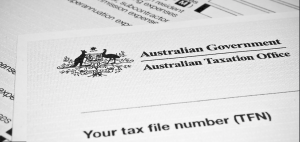How to Lodge Your Taxes by Yourself
Introduction
Lodging your taxes can seem like a daunting task, but with the right guidance and resources, you can successfully complete this important financial responsibility on your own. Whether you’re a first-time filer or have been doing it for years, taking the initiative to file your taxes independently can save you money and empower you with a better understanding of your financial situation. In this article, we’ll walk you through the step-by-step process of how to lodge your taxes by yourself, from gathering necessary documents to submitting your completed return.
Gathering Your Documents
Before you begin the tax-filing process, it’s crucial to gather all the necessary documents and information. Being organized from the start will make the process smoother and ensure you don’t overlook any important details.
What You’ll Need
- Income Documents: Collect all your income-related documents, such as W-2s from your employer, 1099s for freelance work, and any other documents that report your earnings.
- Personal Information: Have your Social Security number, as well as the SSNs of any dependents you’re claiming on your return.
- Expense Records: Gather receipts and documentation for deductions and credits you plan to claim. This includes expenses related to education, medical costs, and charitable donations.
- Previous Tax Returns: If you filed taxes in previous years, having those returns on hand can help you reference past information and ensure accuracy.
- Bank Statements: Some financial information might be necessary, such as interest earned on your savings accounts.
- Healthcare Information: Make sure you have proof of health insurance coverage, as well as any related forms, to avoid potential penalties.
Choose Your Filing Method
Once you have all your documents in order, you’ll need to decide how you want to file your taxes. There are several options available, depending on your comfort level, complexity of your return, and personal preferences.

Filing Options
- Paper Filing: This traditional method involves completing a physical tax return form and mailing it to the appropriate tax agency. While it may be more time-consuming, it’s a viable option for those who prefer a hands-on approach.
- E-File (Electronic Filing): E-filing is the most popular and efficient method. You can use tax software or online platforms to enter your information, perform calculations, and submit your return electronically. It often provides step-by-step guidance and catches errors in real-time.
- Free Filing Services: If your income is below a certain threshold, you may qualify for free tax filing services provided by the IRS or other tax software companies. This option is cost-effective and ensures you meet all filing requirements.
Understand Deductions and Credits
As you prepare your tax return, it’s essential to be aware of potential deductions and credits that can lower your tax liability and possibly lead to a refund.
Deductions
- Standard Deduction: Many taxpayers opt for the standard deduction, which reduces your taxable income by a fixed amount. The standard deduction amount varies based on your filing status.
- Itemized Deductions: If your eligible expenses exceed the standard deduction, you might consider itemizing deductions. Common categories for itemized deductions include medical expenses, state and local taxes, mortgage interest, and charitable contributions.
Credits
- Child Tax Credit: If you have qualifying children, you may be eligible for the Child Tax Credit, which can provide a significant reduction in your tax bill.
- Earned Income Tax Credit (EITC): The EITC is designed to help low- to moderate-income individuals and families. The credit amount depends on your income, filing status, and the number of dependents.
- Education Credits: If you’re pursuing higher education, you might qualify for education-related credits, such as the American Opportunity Credit or the Lifetime Learning Credit.
Completing Your Return
With your documents organized, filing method chosen, and deductions and credits in mind, it’s time to complete your tax return.
Step-by-Step Process
- Select a Filing Software: If you’re e-filing, choose a reputable tax software or online platform that suits your needs. Follow the prompts to create an account or log in.
- Enter Personal Information: Input your personal details, including your name, Social Security number, and filing status. Ensure accuracy to avoid delays or errors.
- Report Income: Enter all income amounts from your W-2s, 1099s, and any other sources. Double-check for accuracy and ensure you’re not missing any income.
- Claim Deductions and Credits: If you qualify for deductions and credits, the software will guide you through the process of claiming them. This often involves answering questions and providing relevant information.
- Review and Edit: Carefully review all the information you’ve entered. Make any necessary edits or corrections before proceeding.
- E-File or Print: If you’re e-filing, follow the software’s instructions to submit your return electronically. If you’re paper filing, print out your completed forms and mail them to the appropriate address.
Final Steps and Considerations
Before you officially submit your tax return, there are a few more steps to take and important considerations to keep in mind. For a personal tax agent sydney see here.

Double-Check Your Return
Thoroughly review your entire tax return to ensure accuracy and completeness. Mistakes can lead to delays in processing or even potential audits. Double-check all calculations, deductions, and personal information.
Keep Copies
Whether you file electronically or on paper, make sure to keep copies of your tax return and all supporting documents. These copies will be valuable for reference in the future or in case of any discrepancies.
Pay Any Owed Taxes
If you owe taxes, it’s important to submit your payment by the tax deadline. Most e-filing platforms offer options for electronic payment, while paper filers can enclose a check or money order with their return.
Stay Informed
Tax laws and regulations can change from year to year. To stay informed and up-to-date, consider subscribing to relevant tax-related newsletters or updates from the IRS.
Conclusion
Lodging your taxes by yourself may initially seem like a complex task, but with careful preparation and the right resources, it’s entirely manageable. By gathering all necessary documents, choosing the right filing method, understanding deductions and credits, and following a step-by-step process, you can confidently complete your tax return on your own. Remember to review your return for accuracy, keep copies of all documents, and stay informed about any changes in tax regulations. Taking control of your tax filing can lead to a greater sense of financial responsibility and empowerment.


